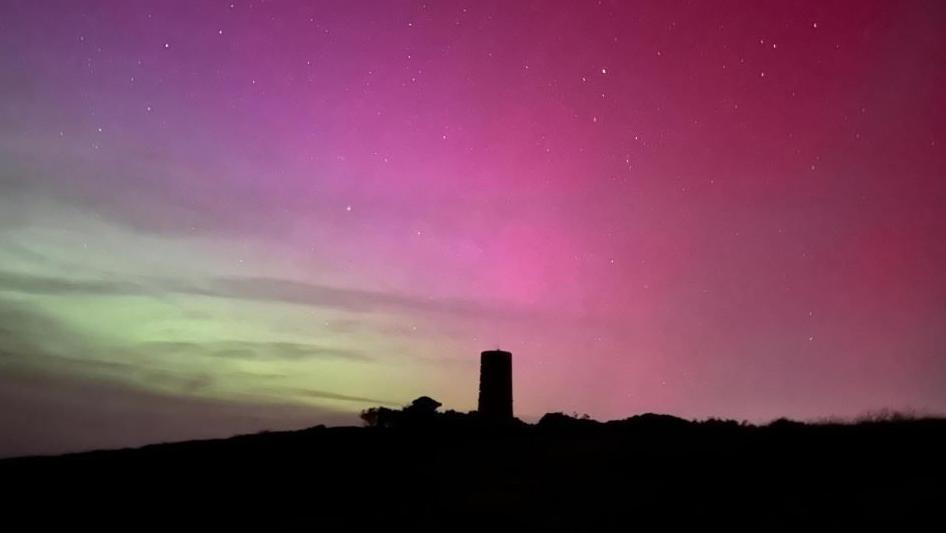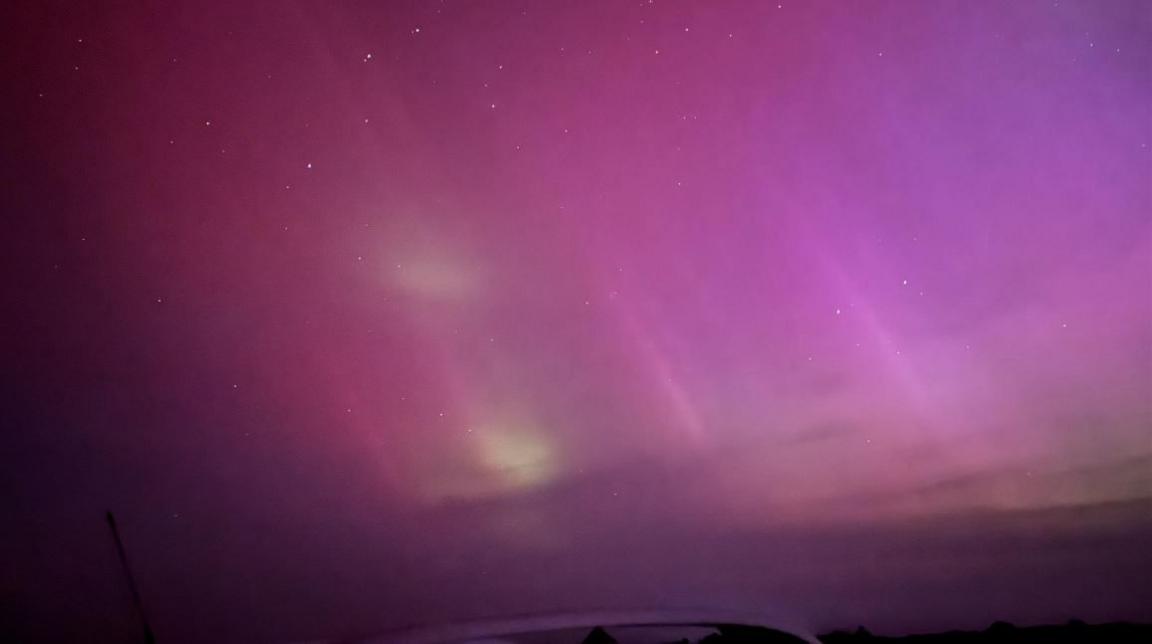Islanders dazzled by Northern Lights

Image caption, An artist's dream at Lihou headland in Guernsey
1 of 4
- Published
Landscapes and seascapes across the Channel Islands were cast in a new glow as the Northern Lights made their presence known on Friday night and Saturday morning.
Officially known as the aurora borealis, the lights became visible after one of Earth's strongest geomagnetic storms to date - and were caught on camera by those who stayed up late enough to witness them.
The storm sparked a warning from the US National Oceanic and Atmospheric Administration (NOAA).
According to BBC weather, Friday evening's clear skies boosted the chances of catching one of nature's most fascinating spectacles.
There is also expected to be a chance to see the Northern Lights on Saturday night.
What are the Northern Lights?
The Northern Lights - or aurora borealis - appear as bright, swirling curtains of lights in the night sky and range in colour from green to pink and scarlet.
It is caused by charged particles from the sun hitting gases in the Earth's atmosphere.
The colours occur due to different gases in the Earth's atmosphere being energised by the charged particles.
The two most common gases in the Earth's atmosphere are nitrogen and oxygen. Oxygen atoms glow green - the colour most often seen in the Northern Lights, while nitrogen atoms emit purple, blue and pink.
The most impressive auroras occur when the Sun emits really large clouds of particles called "coronal mass ejections".


